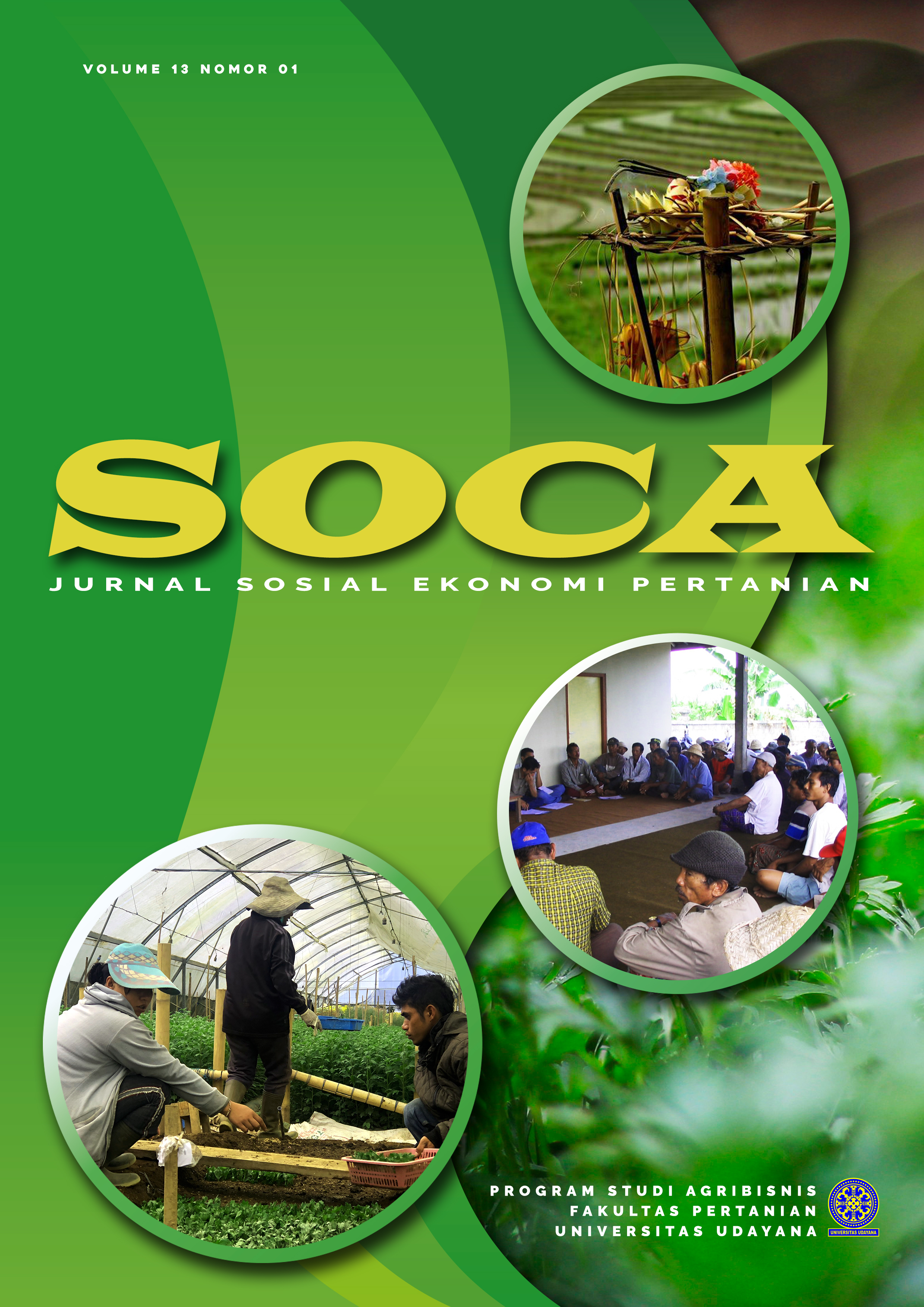SOCIAL CAPITAL OF MEMBERS GEMAHRIPAH FARMER GROUP FOR SOLVING PLANT PESTS AND DISEASES IN WIROWONGSO VILLAGE AJUNG DISTRICT JEMBER REGENCY
Abstract
The agricultural sector is currently often a serious concern by the government, this is due to the many problems that often attack the agricultural sector. The main problems that often become disruptions to the agricultural sector are the problems of pests and diseases. The goal of this research is to determine the social capital of members of the Gemahripah farmer group for solving plant pest and disease problems in Wirowongso Village, Ajung District, Jember Regency. The method of determining the research location in this research uses purposive method. The research method uses qualitative analysis and case studies. The method of data collection uses the method of interviews, observation and documentation to obtain primary and secondary data. Data analysis used the Miles and Huberman analysis models starting from data collection, data reduction, data presentation and conclusions / verification. The results showed that there were 5 main elements of social capital of members of the Gemahripah farmer group for solving the problems of pests and plant diseases, including participation in networks, respirocity, trust, social norms and values.
Downloads
References
Gumilang, S.G. 2016. Metode Penelitian Kualitatif dalam Bidang Bimbingan dan Konseling. Jurnal Fokus Konseling. 2(2):144-159.
Kimbal, R.W. 2015. Modal Sosial dan Ekonomi Industri Kecil: Sebuah Studi Kualitatif. Yogyakarta:
Dee Publisher.
Luciana, S., Margadinata, R., Bisnis, P. M., Manajemen, P. S., Petra, U. K., & Siwalankerto, J. (2017). Analisis Penerapan Modal Sosial Pada Pt. Rajawali Inti Probolinggo, 5(1).
Maer, M.N.D. 2008. Pengantar Teori Komunikasi. Jakarta: Salemba Humanika.
Rianse, U. dan Abdi. 2012. Metodologi Penelitian Sosial Ekonomi Teori dan Aplikasi. Bandung:Alfabeta
Soepriadi, D. S. dan I. F. (2014). Modal_Sosial_Petani_dan_Perkembangan_Industri_di_D. Jurnal Perencanaan Wilayah Dan Kota Vol. 25, No. 1, Hlm. 17-36, 25(1), 17–37. https://doi.org/10.5614/jpwk. 2014.25.1.2
Sitorus, S., L. Kalangi, dan S. K. Walandouw. 2015. Analisis Kesiapan Penerapan Standar Akuntansi Pemerintah Berbasis Akrual Berdasarkan PP. No. 71 Tahun 2010 pada Dinas Pendapatan Pengelolaan Keuangan dan Barang Milik Daerah Kota Tomohon. EMBA, 3(1): 941-949.
Sugiarto, E. 2015. Menyusun Proposal Penelitian Kualitatif : Skripsi dan Tesis.Yogyakarta : Suaka Media
Sugiyono. 2014. Metode Penelitian Pendidikan. Bandung: Alfabeta.
Surachman, E., Suryanto, W.A. 2010. Hama dan Penyakit Tanaman Pangan, Hortikultura dan Perkebunan Masalah dan Solusinya. Yogyakarta : Kanisius.
Suwendra, I.W. 2018. Metodologi Penelitian Kualitatif dalam Ilmu Sosial, Pendidikan, Kebudayaan dan Keagamaan. Bali : Nilacakra.
Trisnanto, T. B., Fitriani, & Fatih, C. (2017). Building social capital for farmer association. Masyarakat, Kebudayaan Dan Politik, 30(10), 59–67. Retrieved from http://ejournal.unair.ac.id/index.php/MKP/article/viewFile/2621/2718
Wastika, C. Y., Hariadi, S. S., Pertanian, F., & Gadjah, U. (2014). PERAN KELOMPOK TANI DALAM PENERAPAN SRI (SYSTEM OF RICE INTENSIFICATION ) DI KECAMATAN KALIKAJAR KABUPATEN WONOSOBO The Role of Farmer Group in The Application of SRI ( System of Rice Intensification ) in Kalikajar Subdistrict Wonosobo Regency, 24(1).
Yusuf, M. A. 2014. Metode Penelitian : Kuantitatif, Kualitatif dan Penelitian Gabungan. Jakarta : Kencana.













